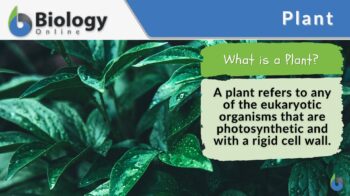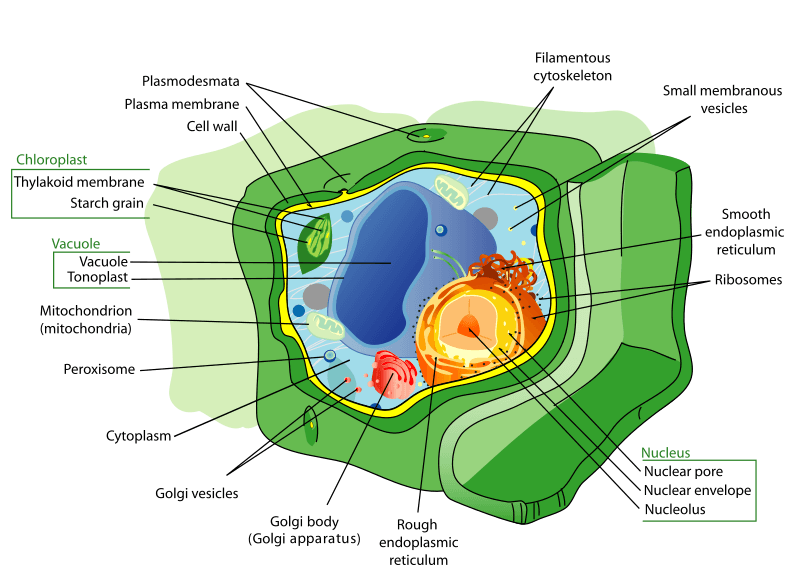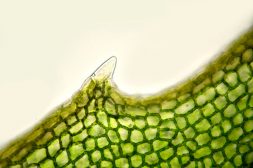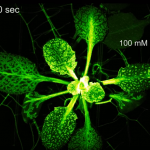
noun, plænt
Any of the eukaryotic organisms that are photosynthetic and with a rigid cell wall.
Table of Contents
Plant Definition
A plant refers to any of the eukaryotic organisms of the biological kingdom Plantae, characterized by being photosynthetic and having a rigid cell wall. These organisms are crucial for oxygen production and food webs.
Etymology: The word “plant” originates from the Latin “planta,” meaning “sprout” or “shoot”.
Synonym: flora; vegetation; foliage
Plant Characteristics
A plant refers to any of the eukaryotes that belong to the biological kingdom Plantae. Plants, in the strictest sense, are embryophytes that include vascular plants, liverworts, hornworts, and mosses. Some references that are less strict considered green algae as plants. The green algae are comprised of unicellular and multicellular species that have chloroplasts and cell walls. The fundamental characteristics listed below focus on the embryophytes. They are as follows:
- Plants are autotrophs. They make their own food through photosynthesis. They are capable of capturing energy via the green pigment (chlorophyll) inside the chloroplast and using carbon dioxide and water to produce sugars as food and oxygen as a by-product. As autotrophs, plants are often placed at the start of the food chain. They are labeled as producers. They serve as food to other organisms, including animals. Animals, in contrast, are heterotrophs and they need to consume other organisms for sustenance. Some animals (particularly, herbivores) depend exclusively on plants while others eat only meat or a mix of animal or plant material. Since plants are capable of making their own food, they do not feed on animals to grow and survive. The exception is a group of carnivorous plants (e.g. Venus flytrap) that catch and feed on animal prey, especially when conditions are less favorable for photosynthesis.
- Plants are eukaryotes. Similar to animals, plants have distinct, membrane-bound nuclei inside the cell. The nucleus is an organelle that contains chromosomes that bear genes. Other organelles suspended in the cytoplasm of a plant cell are the Golgi apparatus, endoplasmic reticulum, lysosomes, peroxisomes, and plastids.
- Plants have plastids. The presence of plastids inside a eukaryotic cell is an indication that it is more likely a plant rather than an animal. There are different types of plastids. Chloroplasts are plastids containing chlorophyll (green pigments) and are involved in photosynthesis. Chromoplasts contain pigments apart from green and are involved in the synthesis and storage of pigments. The chlorophyll systems absorb light energy at particular wavelengths of the electromagnetic spectrum. The pigments are also responsible for the coloration of plant structures (e.g. green leaves, red flowers, yellow fruits). Leucoplasts (e.g. amyloplasts, elaioplasts, proteinoplasts) are non-pigmented plastids. Their function is primarily for food storage. Plants store food in the form of sugar, e.g. starch.
- Plants have a large vacuole inside the cell. This cytoplasmic structure is involved in the regulation of turgor pressure.
- Plants have rigid cell walls apart from the plasma membrane. The cell wall confers added structural support to a plant cell. Plants may not have a skeletal system as that in animals but their cell wall is comprised primarily of cellulosic material that aids in providing structural support.
- Plants have a distinctive cell division where a cell plate (phragmoplast) separates daughter cells.
- Plants are not as motile as animals. They cannot move from one location to another at will. As such, they have to deal with harsh conditions, such as heat. One of the ways they can withstand heat is through their cell walls preventing their body from drying up. Despite this, plants do still exhibit movement but in another form. For example, nastic movement is exemplified by the folding of the leaflets of the plant Mimosa pudica when touched and the closing of the leaf of the Venus flytrap when capturing prey. Some plants (e.g. Betula pendula – silver birch) would even droop their branches and leaves at night as if they were “sleeping”. Another form of plant movement is tropism. Tropism, though, is more of a growth response to a stimulus rather than a movement. For instance, plants tend to grow towards the source of light (phototropism).
- Plants have plasmodesmata. While animals have cell junctions that hold cells in an animal tissue, plants have plasmodesmata that act as if like cell junctions between plant cells. The cell wall forms these cytoplasmic bridges between adjacent cells. These “bridges” facilitate communication between cells and allow the circulation of fluid, thereby helping maintain the tonicity of plant cells.
- Plants are multicellular, being made up of many cells organized into tissues and organs that perform a specific function as a unit. Plant organs are specialized for anchorage, support, and photosynthesis (e.g. roots, stems, leaves, etc.)
- Plants are capable of unlimited growth through meristematic tissues. The tissue is comprised of indeterminate, actively dividing cells that give rise to differentiated tissues such as the epidermis, trichomes, phellem, and vascular tissues.
- Plants lack sense organs but they can perceive their surroundings albeit differently. Plants can “see”, “hear”, and “smell” despite the lack of eyes, ears, and noses. They seem to “feel” and respond in ways not as obvious as in animals. Plants may not have a nervous system as that of animals but they have a system of their own based on how they respond to their surroundings. Arabidopsis, for example, despite lacking eyes, possesses photoreceptors (at least 11 types) that help the plant detect light.1 In another example, herbivory could instigate the release of certain chemicals on the affected plant part.2 Plants have also been observed to release defense chemicals that deter herbivores. Tomatoes were observed to release volatile signals to warn nearby plants of an impending attack from herbivores.3
- Plants reproduce by asexual and sexual means. Asexual reproduction in plants is carried out by budding, fragmentation, fission, spore formation, vegetative propagation, apomixis, etc. Sexual reproduction involves male and female gametes that fuse at fertilization. In general, the plant life cycle incorporates alternation of generations, i.e. the alternating phases of sporophyte and gametophyte.
- Plants “breathe”. Through stomata, carbon dioxide from the atmosphere enters the plant cell. Through photosynthesis, carbon dioxide is converted into oxygen, which the plant releases as a metabolic by-product into the atmosphere through the stomata.
- Plants may not have other well-defined biological systems but they produce chemicals involved in plant defense and immune functions and plant hormones that act as signaling molecules.
Plant Body
Embryophytes, in general, have two major organ systems: (1) shoot system and (2) root system. The shoot system includes body parts that are located in the upper portion of the plant whereas the root system consists of body parts found in the lower portion. The shoot system may include plant organs such as stems, branches, leaves, flowers, and fruits. They are often found above the ground. The root system includes roots, tubers, and rhizomes. They are often found underground.
The tissues of plants are:
- Embryonic or meristematic tissues – plant tissues made up of undifferentiated and mitotically active cells. Examples are apical meristem and cambium
- Permanent tissues – plant tissues that consist of differentiated cells. The permanent tissues may be further classified into fundamental (e.g. parenchyma, collenchyma, sclerenchyma) and complex (e.g. phloem and xylem tissues)
- Reproductive tissues – plant tissues that are involved in reproduction. An example is the sporogenous tissues
The cells of the plants are eukaryotic, i.e. with well-defined nuclei. The nucleus contains the chromosomes that bear genes. Apart from the nucleus, the other organelles are the endoplasmic reticulum, Golgi apparatus, mitochondria, lysosomes, and plastids. The plastids may be classified based on the pigments: chloroplasts (with chlorophyll, green pigment), chromoplasts (with pigments apart from green), and leucoplasts (colorless plastids). The large structure inside the plant cell is the vacuole. It is responsible for the regulation of turgor pressure.
The plasma membrane surrounds the cytoplasm where these organelles are suspended. Apart from the plasma membrane, the cell has an additional layer called the cell wall. The cell wall, though, is not exclusive to embryophytes. Other organisms such as fungi, algae, and certain bacteria have cell walls. The cell wall of embryophytes is made up of primary and secondary cell walls. A primary cell wall contains cellulose, hemicelluloses, and pectin. A secondary cell wall is a thicker layer. It is rich in lignin that strengthens and waterproofs the wall. The cell wall has many important roles and one of them is to help resist osmotic pressure.

When a plant cell is placed in a hypertonic solution, water moves into the cell and causes the cell to swell. The presence of the cell wall prevents the cell from bursting during excessive osmosis. Conversely, when a plant cell is placed in a hypotonic solution, water diffuses out of the cell, and turgor pressure is lost causing the cell to become flaccid. Further loss of water will result in plasmolysis, and finally to cytorrhysis, the complete collapse of the cell wall.
Apart from osmoregulation, the fundamental physiological processes that plants carry out include photosynthesis, respiration, transpiration, tropisms, nastic movements, photoperiodism, circadian rhythms, seed germination, and dormancy.
Plant Genomics
Plants have large genomes. Among the plant genomes sequenced so far, the wheat Triticum asestivum genome is the largest, with approximately 94,000 genes.4
Plant Life cycle
The life cycle of plants is comprised of two generations: gametophyte generation and sporophyte generation. The alternating phase of diploid and haploid forms is called the alternation of generations. This is also observed in certain algae such as Archaeplastida and Heterokontophyta. In algae with alternation of generations, the sporophyte and the gametophyte are independent organisms.
In embryophytes, the gametophyte generation is one in which the phase begins with a haploid spore (n). The spore undergoes a series of mitotic divisions to give rise to a gametophyte. A gametophyte is a haploid multicellular plant form. It would have only one set of chromosomes. The gametophyte phase is the sexual phase in the life cycle and therefore the plant would develop sex organs that produce gametes, which are also haploid. The gametes that participate in fertilization would later enter the sporophyte generation characterized by the plant form that is diploid following the union of gametes.
In tracheophytes (vascular plants), the sporophyte is in a multicellular form and the dominant phase. Thus, the sporophyte comprises the main plant that we see. Conversely, in the bryophytes (e.g. mosses and liverworts), the gametophyte is the dominant and therefore is the main plant we perceive.
In general, the life stages of tracheophytes start from a seed that develops into a scion when conditions are conducive for growth. The scion grows by producing leaves and growing stems and branches. It develops into an adult plant that eventually produces flowers. The flowers bear sex cells such as sperm cells in pollen grain and ova in the ovules of the ovary. The union of the sex cells results in a zygote contained inside the seed. Monoecious plants bear both sex cells whereas dioecious plants bear only one type of sex cell.
Plants can also reproduce asexually. They do so by not involving the gametes. By asexual reproduction, new plants arise through budding, fragmentation, fission, spore formation, vegetative propagation, and apomixis.
Plant senescence refers to the aging process of plants. For instance, the yellowing of leaves occurs as a result of chlorophyll degradation, thus leaving only the carotenoids, during leaf senescence. However, some plants may continue to form new leaves, such as in deciduous plants.
Plant Ecology
Since plants are capable of photosynthesis, they do not need to hunt or feed on animals for food (except for carnivorous plants). They can manufacture their own food by utilizing energy from light, carbon dioxide from the atmosphere, and water molecules. Nevertheless, one of the sources of carbon dioxide is the waste that animals breathe out during respiration. In return, they give off oxygen as a waste product of photosynthesis. Oxygen is crucial to the survival of aerobic organisms, including animals.
Plants derive other vital nutrients from the minerals dissolved in the soil. They absorb them via their roots. Some of the macronutrients they derive from the soil are calcium, magnesium, nitrogen, phosphorus, potassium, and sulfur. As for micronutrients, plants absorb boron, chloride, copper, iron, manganese, and molybdenum. Thus, dead parts of, or entire, plant leads to their decomposition and the return of essential minerals and compounds to the Earth.
Because of their sense of independence, they are often placed at the start of a food chain. They are the major producers in an ecosystem. Thus, the extinction of plant species can have a major impact on an ecosystem. The International Union for Conservation of Nature (IUCN)’s Red List of Threatened Species, a system of assessing the conservation status of species worldwide, utilized a system of labeling species based on extinction risk. Accordingly, species may be categorized as: “data deficient”, “least concern”, “near-threatened”, “vulnerable”, “endangered”, “critically endangered”, “regionally extinct”, “extinct in the wild”, and “extinct”. In 2016, IUCN reported 2,493 plants were critically endangered whereas 3,654 plants are endangered.5
Plants interact with other organisms and form symbiosis. Examples are as follows:
- mutualism – e.g. plants provide nectar for honeybees while honeybees help spread the plant’s pollen grains
- predation – e.g. carnivorous plants that capture insects and small animals
- competition – e.g. plants that compete with other plants for habitat in terms of available space and nutrients
- commensalism – e.g. plant fruits that stick to animal fur for free transport
- parasitism – e.g. parasitic plants that derive nutrients from their host, such as Cuscuta (dodder) that attaches on, and produces haustoria that absorbs nutrients from, an acacia tree
In 2011, the Census of Marine Life estimated that there could be around 8.7 million eukaryote species on Earth, and of this figure, about 298,000 was predicted to be the total number of plant species. 215, 644 had already been described and cataloged .6
NOTE IT!
Plant Acoustics: Can Plants Hear Us?
Perhaps, you’ve heard about a plant health care tip of talking to your plants so they would grow well. That may sound absurd as plants do not have an auditory system like ours. Nevertheless, there may be some validity to it in the way that plants are sensitive organisms. Sensitive, not in the context of comprehending spoken words, but that plants are capable of perceiving stimuli, including vibrations, from their surroundings. They may not have specialized neuronal networks but they have alternative means to sense s0unds and make optimal “decisions” based on the perceived stimuli.
While the mechanism that plants utilize to perceive sound is still unclear, one potential mechanism involves mechanosensitive ion channels embedded in the plant cell membrane. These cellular channels carry an essential role of allowing or preventing the entry or exit of ions, which could stimulate a cascade of events that ultimately result in a physiological change as a response to sound wave signals. Examples of potential mechanoreceptors are the MSL channels, Ca2+-transporting MCA channels, PIEZO channels, OSCA channels, WAKs, CrRLKs (Article source)
What are indications that plants can “hear”?
- Plants exposed to a playback of chewing vibrations of a caterpillar have been found to produce greater amounts of chemical defenses to repel caterpillars and other herbivores. (Appel & Cocroft, 2014)
- Some plants use their flowers like “ears” to hear for nearby potential pollinators. This study found that Oenothera drummondii flowers produced sweeter nectar soon after exposing to the playback of the natural sound of bee wingbeats than the flowers not exposed to it.
- Aside from protection against herbivory, plants upon detecting buzz sounds from bees release pollen only if the insect is a true pollinator.
- Pisum sativum roots have been shown to locate water even in the absence of moisture, likely due to the roots perceiving vibrations from water movement. (Gagliano et al., 2017)
- Harvested tomatoes treated with certain doses of sound waves did not ripen immediately as opposed to non-treated tomatoes that naturally turned red as they ripen. (Kim et al., 2015)
- Cotton and cucumber treated with sound (0.1/1 kHz for 3 hours) resulted in increased yield. More studies on plants exposed to sounds and how they responded can be found here.
If plants can perceive sound, can they emit sound, too? A growing number of studies indicate that plants emit sounds and these sounds are audible to certain species. Researchers found that plants make sounds. Plants seem to make more popping sounds when distressed, e.g., when they were cut or “thirsty”, than when they’re not. While we may not hear them unaided, some insects like moths can naturally hear those sounds and take them as a signal that the plant is in stress and thus not suitable for laying eggs on. (Source)
Watch this video: Listen to the sound plants make when they are stressed (The Independent):
Plant Evolution
According to the endosymbiotic theory, organelles like plastids and mitochondria represent the formerly free-living prokaryotes. The chloroplasts seem to be related to the prokaryotic cyanobacteria. The basis is the structural similarity between cyanobacteria and chloroplasts. Furthermore, both of them have the same photosynthetic pigments and a single circular DNA molecule as the genome. The endosymbiotic events led to the appearance of the first photosynthetic eukaryotes one billion years ago. Charophyta (a sub-group of green algae) is believed to be that which the embryophytes emerged from. The charophytes and the embryophytes share many similar traits, e.g. phragmoplast formation during mitosis.
A brief timeline of the evolution of embryophytes is shown below:
- Phanerozoic eon » Paleozoic era » Ordovician period: In the Ordovician period (485 million years to 440 million years ago), the first embyophytes (land plants) appeared.
- Phanerozoic eon » Paleozoic era » Devonian period: In the Devonian period (415 million years to 360 million years ago), primitive plants, trees, and shrub-like forests dominated the land and provided new habitats for terrestrial animals. The early seed fern Elkinsia evolved seeds, particularly in the late Devonian period.
- Phanerozoic eon » Mesozoic era: This era spanned from 252 million to 66 million years ago. In the Triassic (approximately 200 million years ago) the flowering plants appear.
- Phanerozoic eon » Cenozoic era: This era called the “new life” is the most recent geological era that spans from 66 million years ago to the present day. During this era, from around 40 million years ago, the grasses appeared. These plants and many other plant groups evolved a new mechanism of metabolism to survive the low CO2 and arid conditions of the tropics.
Recommended Source: Darwin Reviews – the Journal of Experimental Botany’s most prestigious review series and topics that are carefully chosen in the most progressive fields of research.
Plant Taxonomy
The initial definition of plants includes green algae, fungi, and embryophytes since they all have chloroplasts and cell walls. However, algae and fungi eventually were moved to their respective kingdoms.
In the narrowest sense, plants (i.e. Plantae sensu strictissimo) are those that are multicellular, with cell walls containing cellulose and have chloroplasts for photosynthesis. In this case, the kingdom Plantae is comprised of embryophytes, such as vascular plants, liverworts, mosses, and other fossil plants that share the same features.
Plantae sensu stricto (“plants, in a narrow sense”) includes embryophytes and green algae (Chlorophyta and Charophyta). This is still a widely recognized definition of plants. They make up the clade, Viridiplantae (or Chlorobionta), which is commonly called the green plants. The different divisions of the kingdom Plantae sensu stricto are as follows:
- Chlorophyta
- Charophyta
- Marchantiophyta (liverworts)
- Anthocerotophyta (hornworts)
- Bryophyta (mosses)
- Lycopodiophyta (club mosses)
- Pteridophyta (ferns, whisk ferns, and horsetails)
- Cycadophyta (cycads)
- Ginkgophyta (ginkgo)
- Pinophyta (conifers)
- Gnetophyta (gnetophytes)
- Magnoliophyta (flowering plants)
Significance
Plants are essential to the lives of different organisms since they are the producers of the food chain. They store starch. They also serve as an important source of minerals and compounds.
Plants serve as habitats for certain organisms (e.g. insects and arboreal organisms). They are also the major source of oxygen that aerobic animals need to live.
Certain plants have medicinal properties. Dandelion (Taraxacum officinale) as a mild laxative, plantain (Plantago major) leaves for reducing inflammation and pain, and burdock (Arctium minus) roots and leaves for alleviating eczema or cracked skin are just a few of the multifarious medicinal plants.
Humans use plants for the manufacture of diverse products such as essential oils, pigments, resins, tannins, alkaloids, amber, waxes, cosmetics, plastics, rubber, varnish, lubricants, inks, and so on.
Wood from plants is used in the construction of buildings, musical instruments, boats, and furniture. It is also used in making paper.
Research
The branch of science that studies plants is called botany (or plant biology). An expert in this field is called a botanist. Some of the areas of study are morphoanatomy, cytology, histology, physiology, ecology, evolution, taxonomy, and pathology. Diverse plant groups led to sub-disciplines such as:
- Paleobotany – the study of fossil plants
- Algology – the study of algae
- Mycology – the study of fungi
- Bryology – the study of mosses, liverworts, and hornworts
- Pteridology – the study of ferns
- Palynology – the study of pollen grains and spores
Applied botany deals with the commercial and economic uses of plants. It encompasses agriculture (e.g. agronomy, horticulture, plant breeding), forestry (e.g. dendrology, wood technology), pharmaceutical botany, and landscape architecture.
Scientific Classification
- Domain: Eukaryota
- (unranked): Archaeplastida
- Kingdom: Plantae Copeland, 1956
See also
Further Reading
- Vegetative plant propagation – Science Learning Hub. (Read this to learn about the various ways to propagate a plant through asexual methods.)
Notes
The taxonomic classification of organisms may change based on new findings.
References
- Gabbatiss, J. (2017, January 1). Plants can see, hear and smell – and respond. Retrieved from http://www.bbc.com/earth/story/20170109-plants-can-see-hear-and-smell-and-respond
- Plant sets off “SOS” for plant defense when it gets hurt – Biology Blog & Dictionary Online. (2018, September 22). Retrieved from https://www.biologyonline.com/plant-sets-off-sos-for-plant-defense
- Mescher, M. C., & De Moraes, C. M. (2014). Pass the ammunition. Nature, 510(7504), 221–222. https://doi.org/10.1038/510221a
- Brenchley, R., Spannagl, M., Pfeifer, M., Barker, G. L. A., D’Amore, R., Allen, A. M., Hall, N., et al. (2012). Analysis of the bread wheat genome using whole-genome shotgun sequencing. Nature, 491(7426), 705–710. https://doi.org/10.1038/nature11650
- Critically Endangered (CR). (2016). Retrieved from http://cmsdocs.s3.amazonaws.com/summarystats/2016-2_Summary_Stats_Page_Documents/2016_2_RL_Stats_Table_2.pdf
- Census of Marine Life. (2011, August 24). How many species on Earth? About 8.7 million, new estimate says. ScienceDaily. Retrieved from http://www.sciencedaily.com/releases/2011/08/110823180459.htm
© Biology Online. Content provided and moderated by Biology Online Editors








